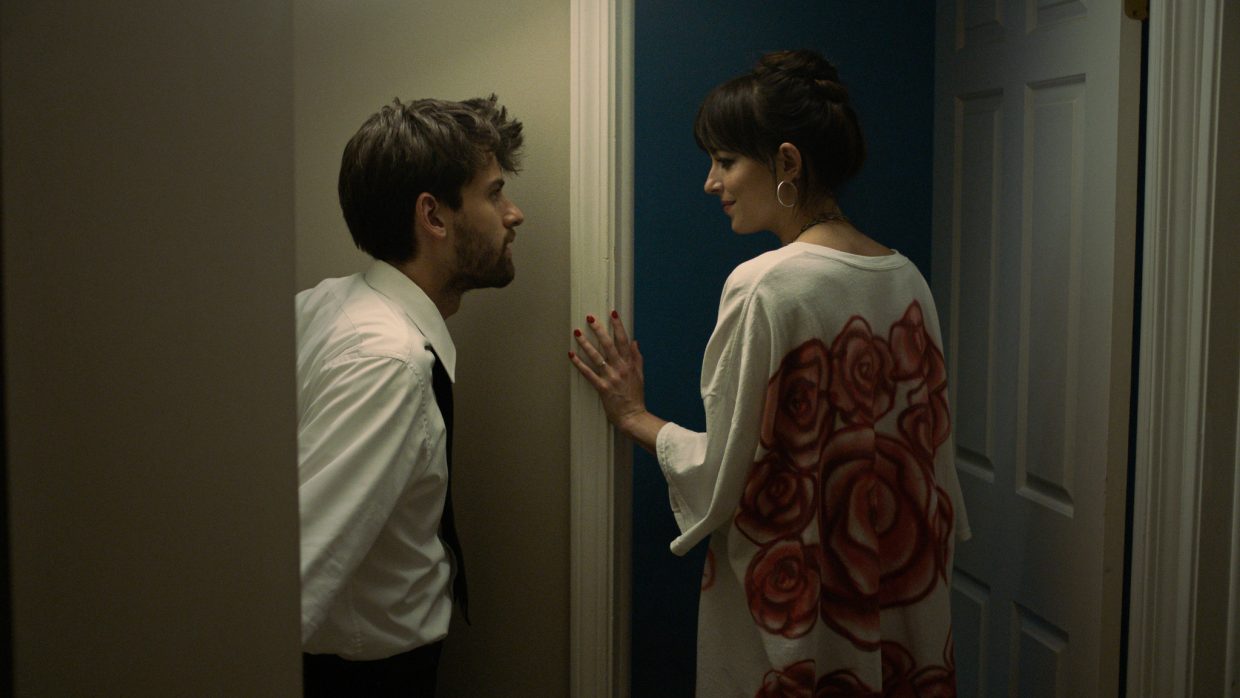 Back to selection
Back to selection
“He Knew Exactly What Movie He Wanted to Make”: Editor Henry Hayes on Cha Cha Real Smooth
 Cha Cha Real Smooth
Cha Cha Real Smooth Cooper Raiff’s follow-up to his 2020 SXSW winner Shithouse follows a recent alum who, unable to find a career path, moves back home and begins to work as a party-starter for his younger brother’s classmates. When he befriends a local’s mom, he begins to imagine a different future for himself. Editor Henry Hayes balancing humor and pathos and how working with friends and on small projects gave him space to experiment.
Filmmaker: How and why did you wind up being the editor of your film? What were the factors and attributes that led to your being hired for this job?
Hayes: Cooper had seen the last film I edited, Mickey and the Bear, and I guess that was enough. I’d seen Shithouse and was a fan of his, so we hit it off immediately on our intro Zoom. We talked a lot about pacing and performance, but the big concern for Cooper and the producers was speed. The shoot wrapped in early September, so getting the edit turned around in time for submission to Sundance was the biggest concern.
Filmmaker: In terms of advancing your film from its earliest assembly to your final cut, what were your goals as an editor? What elements of the film did you want to enhance, or preserve, or tease out or totally reshape?
Hayes: When I read the script for Cha Cha Real Smooth I found it both hilarious and incredibly tender, and at the forefront of my mind was preserving and accentuating that as the dailies started coming through. The movie walks a bit of a tonal tightrope, and early on when you’re just assembling scenes you’re sort of just feeling your way around hoping that when it all gets assembled together you’re hitting the correct beats. Obviously once you see everything back-to-back you realize that a lot of the times you made the wrong call and that a scene that you cut to end with a laugh should end with a more serious note or vice versa.
Filmmaker: How did you achieve these goals? What types of editing techniques, or processes, or feedback screenings allowed this work to occur?
Hayes: Cooper’s an editor in his own right, so he was able to take scenes and do his own version and then bring it back into the full cut. His instincts around performance are really incredible, and often he’d pick out amazing moments that I wouldn’t have thought to use or didn’t feel right in the first assembly. It was a truly collaborative process. I’d come into the edit suite some mornings and he’d have been there for a few hours already grinding away on something that had stumped us.
Filmmaker: As an editor, how did you come up in the business, and what influences have affected your work?
Hayes: I went to film school at NYU and did some assistant work while I was in school, but I really learned to cut under an editor named Brad Turner. I worked as his assistant on Goat, which played Sundance in 2016 and then on Patti Cakes, which premiere in 2018. Seeing those two movies come together from beginning to end was the most valuable experience I could have ever had—watching them assembled, then torn apart, and finally pieced back together again—and without that experience I don’t know where I’d be. The big lesson always was “nothing is set in stone.” The footage is the clay you have to work with and there’s always a better way to put it together, even if it’s totally outside of how the script conceived it.
After working for Brad I cut my first feature, Annabelle Attanasio’s Mickey and the Bear, which premiered at SXSW in 2019. Annabelle and I had been collaborators for a long time on smaller projects, but neither of us had ever done a feature, so it felt like a very safe environment to learn in. We got to experiment a lot together and make plenty of mistakes.
Filmmaker: What editing system did you use, and why?
Hayes: We cut the film on Avid. We were remote during the production, and the assistant, Mark Scovil, was in LA. He and I both had remote workstations in our homes, and doing a collaborative edit with hurdles like that demanded an Avid setup.
Filmmaker: What was the most difficult scene to cut and why? And how did you do it?
Hayes: The opening scene of the movie is probably what we spent the most time on. You have to hook the audience in and convince them they’re in good hands. We tried a hundred different versions, but ended up with something I think everyone was happy with.
Filmmaker: Finally, now that the process is over, what new meanings has the film taken on for you? What did you discover in the footage that you might not have seen initially, and how does your final understanding of the film differ from the understanding that you began with?
Hayes: The movie is a lot more tender than I ever imagined it being when I first read the script, and even when I first started cutting the dailies. It’s a credit to Cooper’s vision, which was sure the entire way through. He knew exactly what movie he wanted to make, and in the end we executed it.
